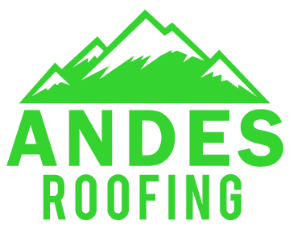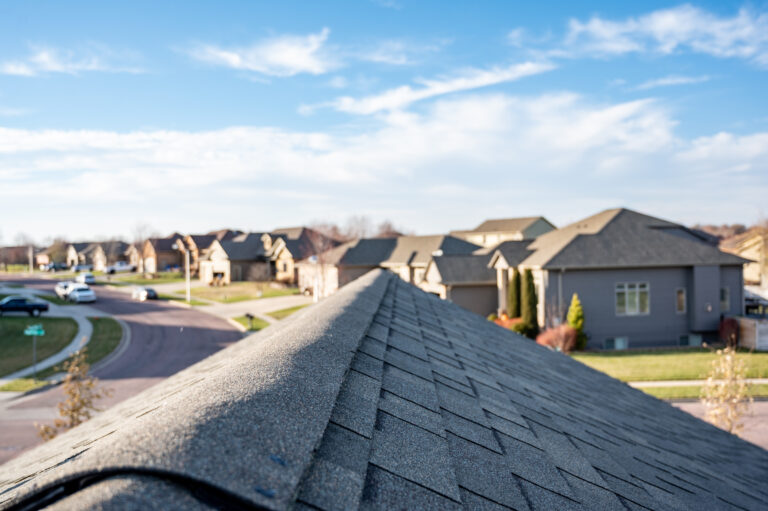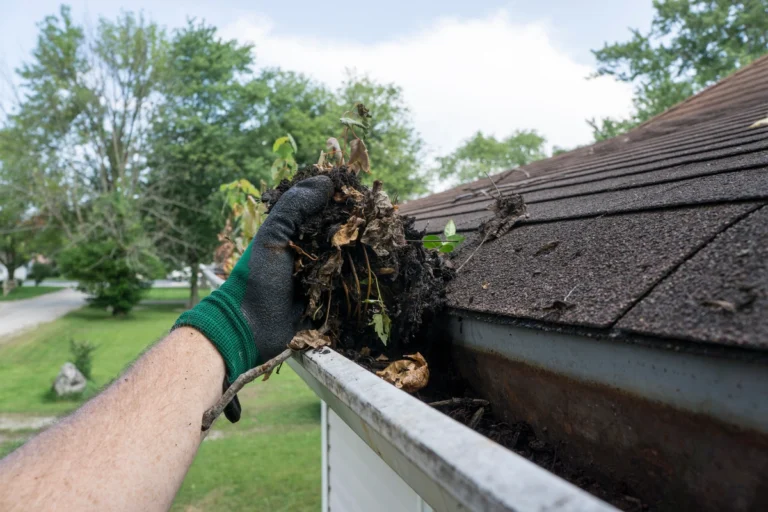Mold on your roof shingles isn’t just unappealing to the eye, but it also poses severe issues to your home if left untreated. It can also create health problems for high-risk people who live inside the home, as mold can be a serious allergen that can make people sick.
You should contact a local roofing professional as soon as you see mold starting to grow and prevent it from growing back to keep your home safe and in proper shape. Here are your options for removing and preventing mold when you see mold on your asphalt shingles.
Causes of Mold on Your Shingles
Roof mold usually grows on your shingles due to algae growth. If you look closely at your roof, you’ll notice a blue and green residue. It is most likely gloeocapsa magma algae. This blue green algae commonly grows on moist soil, rocks, and other moist areas such as your roof. It most often grows during humid summers.
Roof algae needs the following elements to grow:
- Sunlight
- Water
- Carbon dioxide
- Phosphorus, nitrogen, and other nutrients
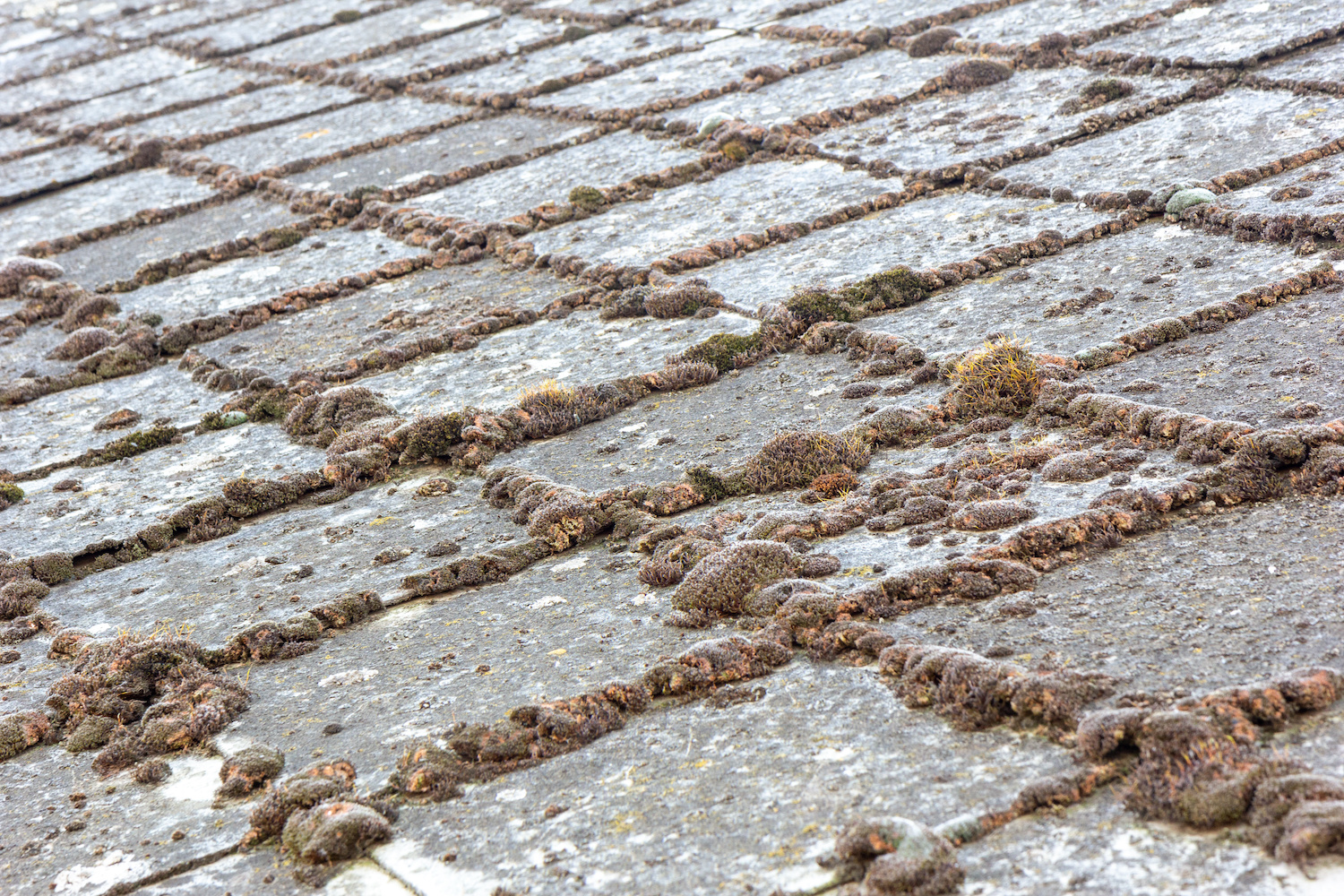
It’s hard to keep a roof dry, so everyone is prone to see algae growth on their roof at some point if they don’t take care of it correctly. Roof algae and mold both thrive well in wet and humid environments. If you leave algae on your roof for long periods, it retains moisture and will eventually lead to mold.
Dangers of Mold on Your Shingles
At first, a small amount of algae or roof fungus might seem like a minor problem, but it can quickly become a large and expensive issue if you ignore it.
Algae and mold on the shingles of a roof can be detrimental, as they can start eating away at the shingles. If left untreated, it is possible that the roof algae and mold can penetrate through the underlayment that lies underneath the shingles. With enough time and moisture, these things may reach the wood part of your roof and cause it to rot, ultimately creating roof leaks.
These rotting holes are invitations for the algae and mold to come into your home and allow structural damage to occur. Roof rotting due to mold also exposes your home to the outdoor elements, inviting in more moisture.
If the holes are large enough, you can expect rodents and other animals to make their home inside your roof as well.
Mold spores are very harmful and can create respiratory problems. It can bring significant health risks to the people and pets living in your house.
Mold is a living organism, and the airborne spores it creates can travel rather long distances. In the beginning stages of mold growth on your roof, you probably won’t feel affected because it is only on the outside of your home. As you allow the mold to grow and your roof rots, the spores can get released into your home’s interior and become a health hazard.
Mold exposure can make you feel ill and can provoke the following symptoms:
- Watery and itchy eyes
- Itchy and running nose
- Sneezing, wheezing, and coughing
- Breathing difficulties
- General itchiness
- Headaches
- Fatigue
Depending on your tolerance to mold and the type of mold eating away at your home, you can experience mild symptoms or symptoms that may need medical treatment. The types of mold that can cause serious illness release mycotoxins, which are disease-causing molecules. Black mold is one of the types that can do this.
How To Remove Mold From Shingles
The second you see roof algae and mold on your shingles, your first line of action should be to kill the organisms and remove them. To do both of these things at the same time, the best option is to clean the roof with bleach and water. If you feel comfortable or skilled enough, you can do this on your own.
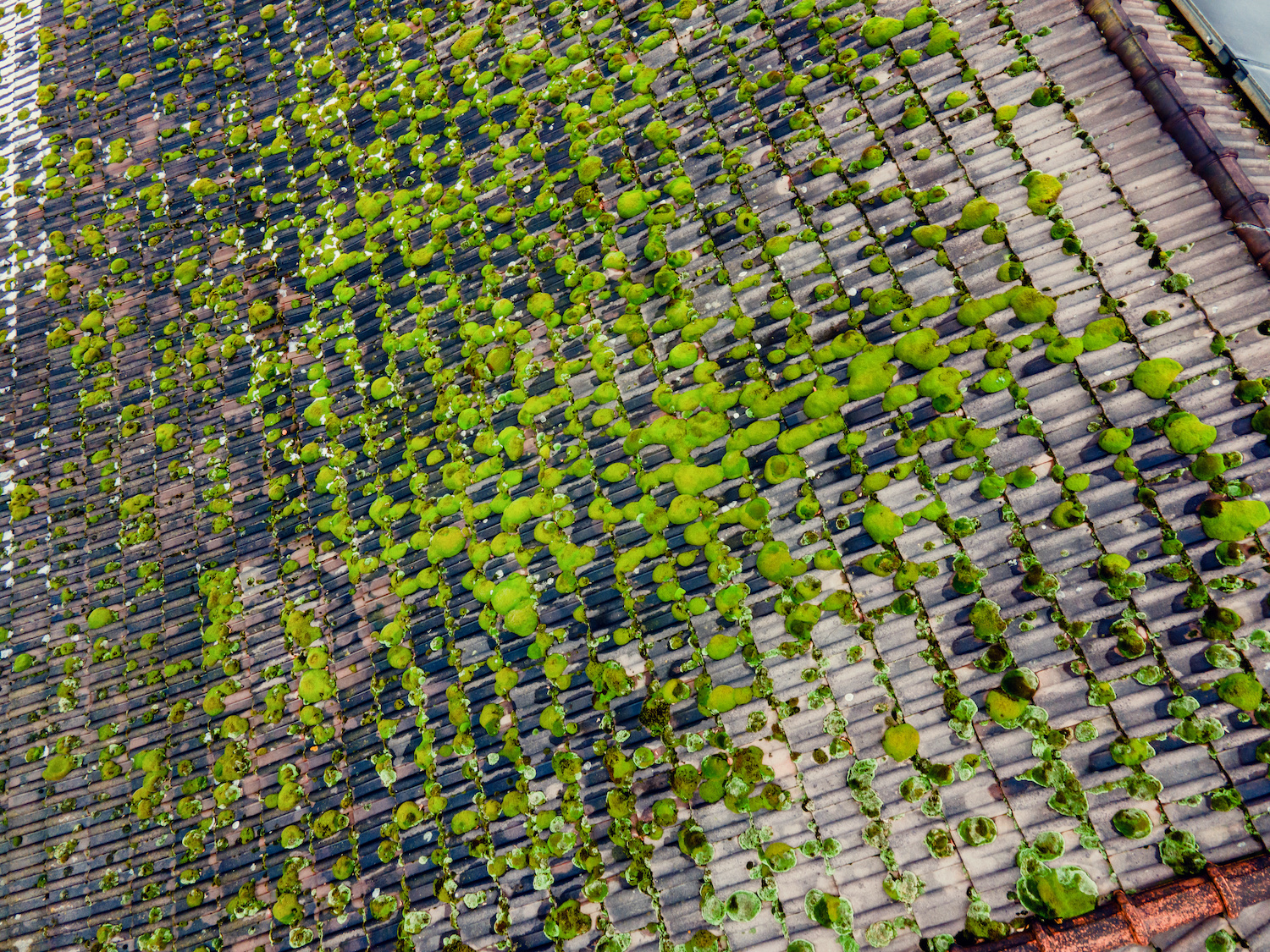
To make the mixture and clean your roof, follow these steps:
- Put on rubber gloves and clothes you don’t care about, as bleach can harm your skin and stain your clothes.
- If you feel concerned about landscaping around your home, you should spray your plants with water before using the bleach mixture on your roof. The bleach will not stick to your plants if you do this.
- Make the bleach mixture by mixing chlorine bleach and water. Use equal parts of each. If you need extra cleaning power, you can add about a cup of trisodium phosphate to this mixture per gallon.
- Pour or spray this mixture on the area of your roof where you’re seeing algae, moss buildup, and mold. Let it sit on your roof for at least half an hour. A pump sprayer is good for this.
- Thoroughly rinse the bleach mixture, dead algae, and mold off your roof with a garden hose.
- Repeat these steps if you see new growth.
If you are not comfortable cleaning mold on your shingles, you can always call a roofing professional for help. They can give you a roof inspection and determine the best course of action.
How To Prevent Mold From Growing on Shingles
You have a few options when it comes to preventing algae and mold on roofing shingles, ranging from roof materials to just keeping your roof clean.
Clean Your Roof
The easiest option is keeping up with mold and using the bleach solution to control any new mold outbreaks and prevent algae spores from growing. You should also make sure you’re keeping any debris, such as tree branches and leaves, off your roof and out of your gutters to discourage moisture from staying.
Do Some Landscaping
Trim trees and cut down any overhanging branches to prevent debris in the first place. By doing this, you’ll also be reducing shade, which is where moisture tends to be. Standing water will be able to evaporate faster if there is no shade.
Roofing Materials
Keeping up with roof repairs should also be in your best interest to block moisture from entering your home.
If you’re interested, there are shingles that can prevent roof algae and mold from growing on them. Many of the options available to you have copper granules laced into the shingles. There are also copper and zinc strips you can install under your current shingles.
Copper can attach to algae molecules, penetrate them, and cause them to break apart and die. By killing the algae, mold will not grow. Zinc works similarly.
If your roof is too damaged, you may need roof replacement services.
Conclusion
Mold on your roof shingles becomes more difficult to get rid of the longer you leave it to grow. Removing it immediately, killing it, and preventing further growth will keep your roof rot-free and sturdy for years to come. Start with the bleach mixture. If the mold becomes resilient, take further action, such as the use of copper or professional roof cleaners.
